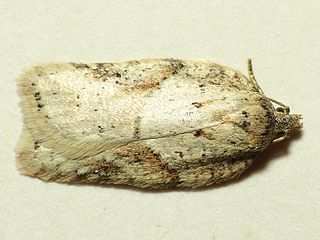
A birch is a thin-leaved deciduous hardwood tree of the genus Betula, in the family Betulaceae, which also includes alders, hazels, and hornbeams. It is closely related to the beech-oak family Fagaceae. The genus Betula contains 30 to 60 known taxa of which 11 are on the IUCN 2011 Red List of Threatened Species. They are a typically rather short-lived pioneer species widespread in the Northern Hemisphere, particularly in northern areas of temperate climates and in boreal climates.

Betula pendula, commonly known as silver birch, warty birch, European white birch, or East Asian white birch, is a species of tree in the family Betulaceae, native to Europe and parts of Asia, though in southern Europe it is only found at higher altitudes. Its range extends into Siberia, China and southwest Asia in the mountains of northern Turkey, the Caucasus and northern Iran. It has been introduced into North America, where it is known as the European white birch, and is considered invasive in some states in the United States and in parts of Canada. The tree can also be found in more temperate regions of Australia.

Betula pubescens, commonly known as downy birch and also as moor birch, white birch, European white birch or hairy birch, is a species of deciduous tree, native and abundant throughout northern Europe and northern Asia, growing farther north than any other broadleaf tree. It is closely related to, and often confused with, the silver birch, but grows in wetter places with heavier soils and poorer drainage; smaller trees can also be confused with the dwarf birch.

Betula papyrifera is a short-lived species of birch native to northern North America. Paper birch is named due to the thin white bark which often peels in paper like layers from the trunk. Paper birch is often one of the first species to colonize a burned area within the northern latitudes and an important species for moose browse. The wood is often used for pulpwood and firewood.

Eriocraniidae is a family of moths restricted to the Holarctic region, with six extant genera. These small, metallic moths are usually day-flying, emerging fairly early in the northern temperate Spring. They have a proboscis with which they drink water or sap. The larvae are leaf miners on Fagales, principally the trees birch (Betula) and oak (Quercus) but a few on Salicales and Rosales.

Hyalophora cecropia, the cecropia moth, is North America's largest native moth. It is a member of the family Saturniidae, or giant silk moths. Females have been documented with a wingspan of five to seven inches (160 mm) or more. These moths can be found all across North America as far west as Washington and north into the majority of Canadian provinces. Cecropia moth larvae are most commonly found on maple trees, but they have also been found on cherry and birch trees among many others. The species was first described by Carl Linnaeus in his 1758 10th edition of Systema Naturae

Betula populifolia is a deciduous tree native to eastern North America.

Campaea perlata, the pale beauty, is a species of moth in the family Geometridae. The average wingspan is about 28–51 mm, and the female tends to be much larger than the male.

Pandemis heparana, the dark fruit-tree tortrix or apple brown tortrix, is a moth of the family Tortricidae.

Argyresthia goedartella, the bronze alder moth, is a moth of the family Yponomeutidae.

The Waved Black(Parascotia fuliginaria) is a species of moth of the family Erebidae. It is natively found in Europe and is an introduced species in North America.

Eriocrania semipurpurella is a moth of the family Eriocraniidae. It is found from Europe to Japan and in North America. The species closely resembles Eriocrania sangii.
Dasystoma salicella, sometimes also known as the blueberry leafroller, is a moth of the family Lypusidae. It is endemic to Europe, but is an introduced species in North America.

Tetheella is a monotypic moth genus in the family Drepanidae described by Werny in 1966. Its single species, Tetheella fluctuosa, the satin lutestring, was described by Jacob Hübner in 1803. It is found from western Europe to Kamchatka, Sakhalin Island, Korea and Japan.

The gold-striped leaftier moth is a moth of the Depressariidae family. It is found in North America from Nova Scotia to North Carolina and Tennessee, west to Mississippi and Iowa, north to Ontario.

Acronicta longa, the long-winged dagger moth, is a moth of the family Noctuidae. It is found across much or North America, with Nova Scotia, Alberta, Florida, and Texas within is range.
Ancylis discigerana, the birch leaffolder or yellow birch leaffolder moth, is a moth of the family Tortricidae. It is found in north-eastern North America.

Epinotia trigonella, the birch epinotia moth, is a species of moth of the Tortricidae family. It is found in most of Europe, east to the eastern Palearctic ecozone. It is also found in North America.

Acleris logiana, the black-headed birch leaffolder moth or grey birch button, is a moth of the family Tortricidae. It was described by Carl Alexander Clerck in 1759. It is found in most of Europe, except Ireland, Portugal, most of the Balkan Peninsula and Ukraine. It is also found in North America, the Russian Far East, Korea and Japan.
Nites betulella, the black-dotted birch leaftier moth, is a moth in the Depressariidae family. It was described by August Busck in 1902. It is found in North America, where it has been recorded from Nova Scotia, southern Canada, the north-eastern United States, British Columbia and Wisconsin.

















